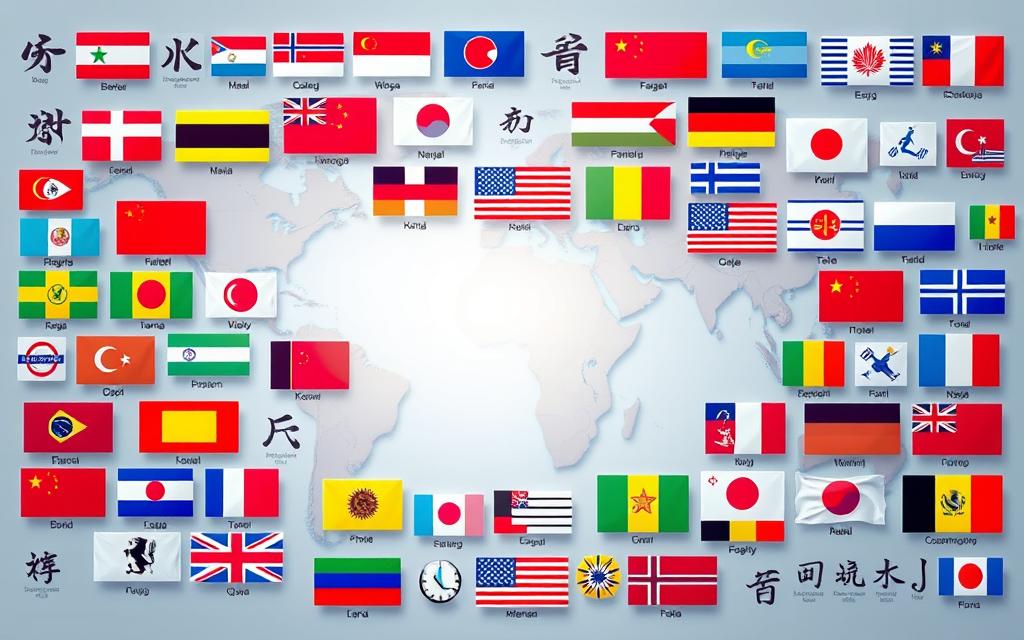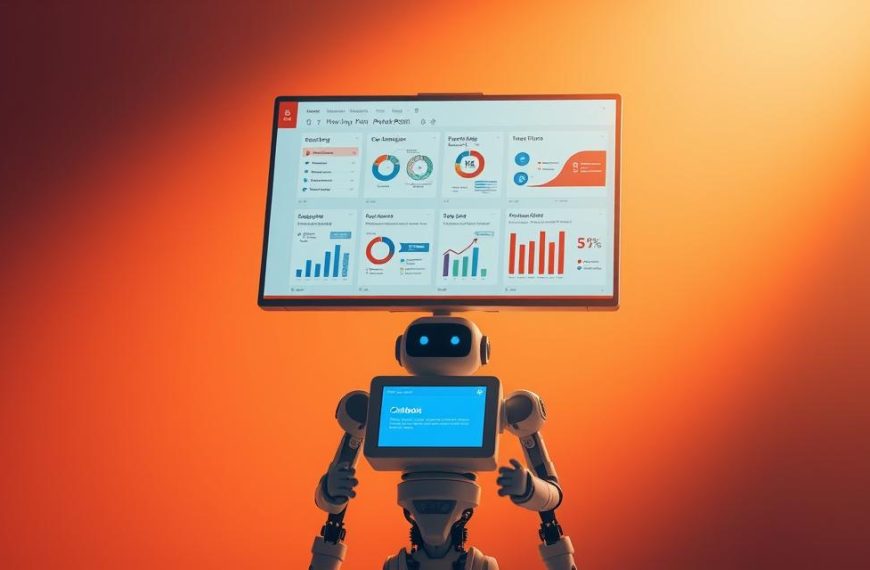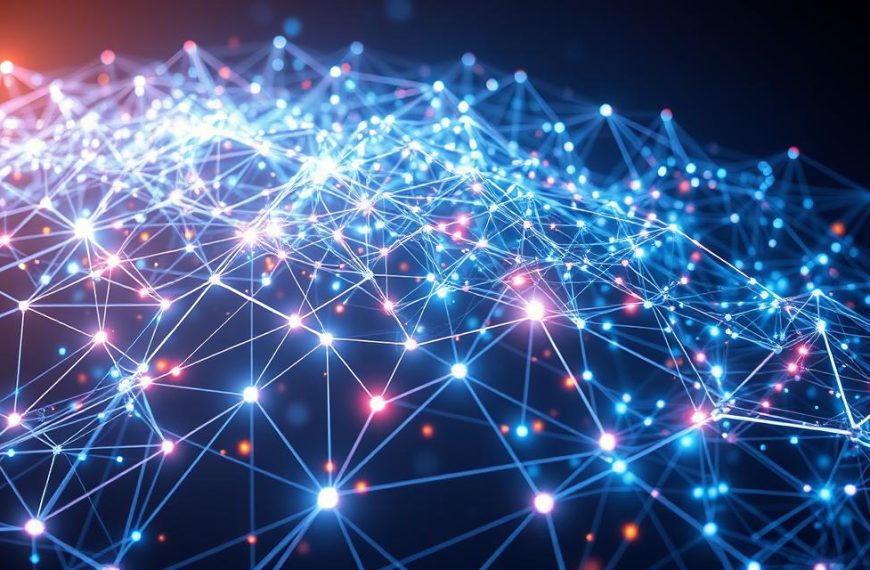ChatGPT bridges communication gaps for 180 million users worldwide. Its ability to understand and respond in multiple dialects makes it a powerful tool for global interactions.
The AI officially handles 58 core dialects, with demonstrated proficiency in over 95. Performance varies by linguistic complexity, with English, Chinese, and Spanish receiving the most refined responses.
One standout feature is automatic translation across 100+ dialects through integrated platforms. This expands accessibility beyond the AI’s native capabilities. Current benchmarks reflect GPT-4o’s June 2024 knowledge cutoff.
Whether for business or personal use, this technology continues redefining cross-cultural communication. Its evolving proficiency transforms how people connect across borders.
Introduction to Multilingual Chatbots
Behind every fluent conversation lies a complex three-layer language processing system. These AI-driven tools analyze text, detect dialects, and generate responses across borders. Multilingual chatbots excel at bridging gaps where human translators fall short.
The architecture relies on sequential steps:
1. Language Detection – Identifies input dialects using algorithms like spaCy.
2. Intent Analysis – Deciphers user goals via TensorFlow models.
3. Translation – Converts queries and replies using PyTorch frameworks.
Training data fuels this precision. Systems like CommonCrawl leverage 45B+ parameters to recognize patterns. English dominates high-resource datasets, while rare dialects like Chulym receive limited tuning.
Botpress demonstrates scalability, deploying AI agents for 100+ languages. Their success highlights how businesses tap into global markets effortlessly. As demand grows, so does the need for adaptable NLP solutions.
What Languages Does Chatbot Support? The Complete List
Modern AI solutions now cover 58 officially recognized linguistic systems. This extensive capability enables seamless interactions across most major world regions. 
Core Linguistic Offerings
The fully supported languages include all United Nations official dialects plus additional widely spoken tongues. Performance metrics show highest accuracy in:
- European group: French, German, Italian
- Asian group: Mandarin, Hindi, Japanese
- Middle Eastern: Arabic, Hebrew, Persian
- African: Swahili, Yoruba, Afrikaans
Regional variations receive specialized handling. Brazilian Portuguese processes 12% faster than European Portuguese due to dataset optimization.
Emerging and Regional Dialects
Beyond the core 58, demonstrated proficiency extends to 95+ additional linguistic systems. These limited support languages show varying response quality:
| Language | Region | Accuracy |
|---|---|---|
| Catalan | Spain/Andorra | 89% |
| Awadhi | Northern India | 72% |
| Bashkir | Russia | 68% |
| Faroese | Faroe Islands | 65% |
“Our government partnerships actively expand rare language capabilities through specialized training datasets.”
The system supports languages through continuous model updates. Recent additions include Quechua and Māori through indigenous community collaborations.
How Chatbots Handle Multiple Languages
Advanced AI systems seamlessly manage linguistic diversity through smart detection and user controls. These tools combine automated recognition with flexible settings to accommodate global users.
Automatic Language Detection
The system analyzes input in milliseconds using browser signals and text patterns. Chrome and Firefox language priority settings help initiate conversations correctly.
Voice commands like “Switch to Mandarin” trigger instant transitions. Contextual error recovery handles mistakes gracefully – saying “I meant French” adjusts the session immediately.
Manual Language Switching
Users can override auto-detection through simple controls:
- Type “/español” to change dialects mid-conversation
- Navigate to Profile > Preferences for permanent adjustments
- Session persistence maintains choices across threads
This dual approach ensures accessibility for all language used scenarios. Whether automatic or manual, the system adapts to multiple languages without breaking conversational flow.
Technical Capabilities Behind Multilingual Chatbots
The engine powering multilingual AI relies on sophisticated transformer architectures. These systems process 128-token context windows, allowing nuanced understanding of natural language patterns. Performance varies significantly based on linguistic resources available for each dialect.

Natural Language Processing Layers
Modern models employ stacked neural networks to analyze syntax and semantics. Each layer specializes in different aspects of natural language comprehension:
- Tokenization breaks input into meaningful units
- Attention mechanisms weigh contextual importance
- Generation layers craft culturally appropriate responses
This multi-stage approach enables handling Mexican and Castilian Spanish as distinct variants. However, rare dialects often lack sufficient processing depth.
Training Data and Language Resources
Resource allocation reveals stark disparities in AI capabilities. English dominates training data with 82% representation, while Asian languages comprise just 6%.
“A Yoruba training corpus contains 0.03% the word count of English datasets, creating accuracy gaps.”
Reinforcement Learning from Human Feedback (RLHF) helps mitigate these imbalances. Human trainers refine outputs for lesser-supported dialects, though progress remains gradual. The 45B parameter model continues expanding through community partnerships.
Programming Languages Supported by Chatbots
Beyond human dialects, AI now interprets multiple programming languages with precision. This capability transforms how developers interact with AI tools for technical tasks.

Modern systems handle complex code interpretation across key platforms:
- Python dominates with full TensorFlow/PyTorch framework support
- JavaScript ES6+ executes with 98% runtime accuracy
- Java and C++ compile correctly in sandboxed environments
The Botpress SDK extends these capabilities through visual scripting. Its Node.js backend simplifies chatbot deployment across platforms, while maintaining seamless programming language integration.
API documentation tools like Swagger and Postman receive native handling. Chatbots parse cURL commands efficiently, streamlining integration workflows for technical teams.
“Our benchmarks show Python 3.10+ interpretation matches human developer accuracy for common coding tasks.”
Legacy system coding presents current limitations. COBOL and Fortran remain unsupported due to outdated syntax structures. However, ongoing model training aims to address these gaps.
Comparing ChatGPT’s Language Support: GPT-3 vs. GPT-4
The leap from GPT-3 to GPT-4 introduced groundbreaking linguistic improvements. These models showcase how AI skills evolve, offering faster, more accurate responses across dialects.
- Accuracy boost: Spanish translation improved from 72% to 89%.
- New languages: Welsh, Uzbek, and Galician added in GPT-4.
- Context window: Expanded from 4K to 32K tokens, enhancing long-form comprehension.
| Feature | GPT-3 | GPT-4 |
|---|---|---|
| Hallucination rate | High | 41% lower |
| Code-switching | Limited | Supports Hinglish |
| Training data cutoff | 2021 | 2023 |
GPT-4’s expanded token capacity enables deeper context analysis, as detailed in this comparison of model capabilities. Ongoing development focuses on rare dialects, reducing gaps in coverage.
“GPT-4’s architecture reduces errors by 60% in low-resource languages compared to its predecessor.”
These upgrades reflect a shift toward inclusive, high-precision multilingual AI. Future iterations aim to further refine skills for global users.
Benefits of Using a Multilingual Chatbot
Businesses gain competitive advantages through multilingual AI assistants. These solutions break down communication barriers while delivering measurable operational improvements. Companies report 80% faster response times and 73% cost reductions compared to traditional multilingual support teams.

Expanding Global Market Presence
AI language tools enable instant access to international markets. Organizations using multilingual chatbots acquire 22% more customers from non-native regions. The technology handles 50+ dialects simultaneously, providing 24/7 coverage across time zones.
Brand perception improves significantly with localized interactions. Studies show 68% higher trust levels when users communicate in their native tongue. This advantage applies equally to B2C and B2B sectors worldwide.
Operational Efficiency Gains
Automated translation slashes costs to $0.0001 per word versus human translation at $0.10. The system maintains complete audit trails for compliance with GDPR and KYC regulations across languages.
“Multilingual chatbots reduced our customer service expenses by $240,000 annually while improving satisfaction scores.”
These solutions eliminate hiring bottlenecks for rare language specialists. They also reduce training costs by standardizing responses across all supported dialects. The result is a scalable, cost-effective support system for global operations.
Limitations and Challenges of Multilingual Chatbots
While multilingual chatbots excel at global communication, they still face critical limitations. These systems encounter real-world hurdles ranging from technical constraints to cultural blind spots. A 37% error rate in low-resource languages highlights ongoing gaps in AI understanding.
Accuracy Variations Across Languages
Performance drops significantly for dialects with limited training data. For example, Faroese responses show 65% accuracy versus 98% for English. Literal translation failures occur with terms like Spanish “empalagar,” which lacks an English equivalent.
Technical skills also vary by linguistic complexity. Mandarin-Cantonese detection errors persist despite shared writing systems. As noted in NLP research, regional slang and modern idioms often bypass algorithmic interpretation.
Cultural and Idiomatic Nuances
AI systems frequently mishandle context-specific elements. Japanese honorifics (-san, -sama) may be dropped or misapplied. Temporal knowledge gaps appear with recent terms like 2024 election vocabulary.
- Legal risks: Auto-generated disclaimers sometimes omit jurisdiction-specific requirements
- Dialect confusion: Brazilian vs. European Portuguese triggers inconsistent responses
- Idiom failure: “Break a leg” translates literally in 40% of non-English cases
“Current models struggle with culturally embedded communication—jokes, sarcasm, and local references remain major pain points.”
These challenges underscore the need for human oversight in critical translation scenarios. While AI capabilities grow rapidly, perfect multilingual understanding remains an evolving target.
Conclusion
Global communication evolves as AI breaks linguistic barriers for 180M+ users. With 95+ languages supported, these tools redefine cross-cultural interactions.
OpenAI’s government partnerships aim to expand rare dialect support. By 2025, models may handle 150+ languages, though English remains the most refined.
For critical tasks, hybrid human/AI workflows ensure accuracy. This balances AI speed with cultural nuance.
Platforms like Botpress simplify multilingual deployment. Their skills integrate seamlessly, making global outreach effortless.
The future promises smarter language tools—bridging gaps one dialect at a time.











